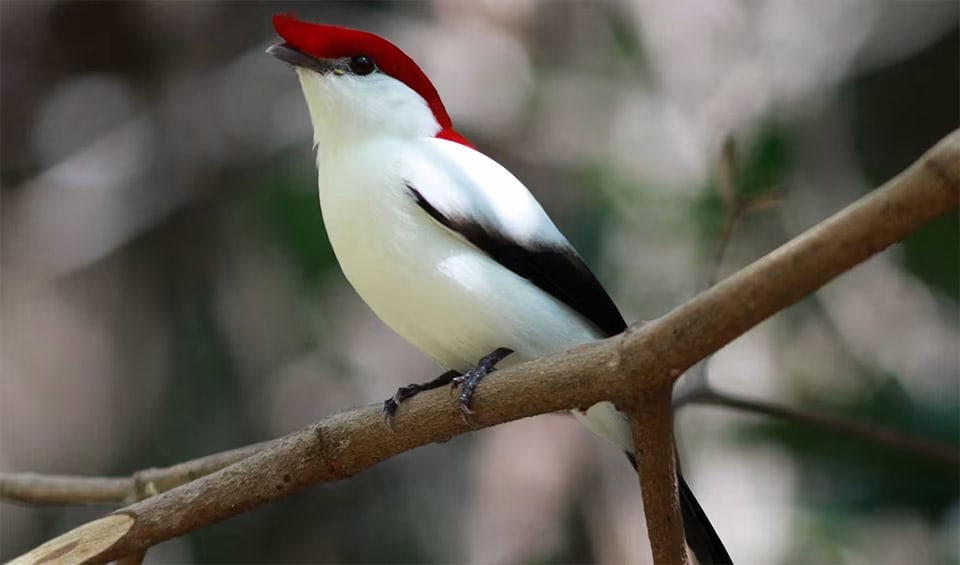A strikingly beautiful and critically endangered bird found only in a small area of Brazil. First discovered in 1996, this species immediately captured attention due to its vivid appearance and extremely limited habitat, making it one of the most endangered birds in the world.
One of the most distinctive features of the Araripe Manakin is its vibrant plumage. Males are particularly striking with a white body, jet-black wings, and a bright red hood that covers the head and nape, extending down to the upper back. This vivid red is stark against the white of its underparts and the green of its forest home, making the male unmistakable when spotted. Females and juveniles, in contrast, are predominantly green, which provides excellent camouflage among the foliage.
The Araripe Manakin inhabits the chapada do Araripe, an area in the Ceará state of northeastern Brazil. This small bird relies exclusively on the unique wet forests found at the base of the Araripe plateau, where lush vegetation thrives due to the water seeping from the plateau’s sandstone layers. This habitat is known as “gallery forest” and is crucial for the survival of the species, providing both food and nesting sites.
One of the most fascinating aspects of the Araripe Manakin is its breeding behavior. Males are known for their flamboyant display rituals, which include singing and a complex series of moves designed to attract females. These performances are vibrant and energetic, involving fluttering flights and acrobatic leaps that showcase their striking red and white plumage.
Distribution
 Brazil
Brazil Official estimate
Official estimate
Anything we've missed?
Help us improve this page by suggesting edits. Glory never dies!
Suggest an editGet to know me
Terrestrial / Aquatic
Altricial / Precocial
Polygamous / Monogamous
Dimorphic (size) / Monomorphic
Active: Diurnal / Nocturnal
Social behavior: Solitary / Pack / Flock
Diet: Carnivore / Frugivore / Omnivore / Piscivorous / Insectivore
Migratory: Yes / No
Domesticated: Yes / No
Dangerous: Yes / No




